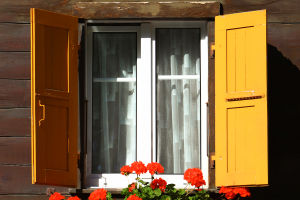The red-crowned crane (scientific name: Grus Japonensis), also known as the Japanese crane or the red-crowned crane, is a large crane-like bird belonging to the genus Grus.
It is one of the largest cranes in the world and one of the most famous birds in East Asia.
The red-crowned crane has an elegant appearance and unique characteristics.
They are tall, with a body length of about 130-150 cm and a wingspan of 230-250 cm.
They have pure white plumage, long, thin black legs, and bright red skin and crown feathers, which is one reason they got their name.
The red-crowned crane's beak is long, pointed, and black.
Red-crowned cranes mainly inhabit East Asia, including countries such as China, North Korea, and Japan.
They breed in environments such as wetlands, swamps, and rice fields, and usually choose grasslands or watersides to build their nests.
The red-crowned crane is an omnivorous bird that feeds on plant seeds, rhizomes, insects, and small vertebrates.
Red-crowned cranes have faced serious threats to their survival in the past few decades, mainly due to factors such as habitat destruction, hunting, and human activities. Their numbers have plummeted, and they are listed as endangered.
To protect red-crowned cranes, countries have taken many measures, including establishing protected areas, banning hunting, and promoting international cooperation.
In recent years, the effects of some protection measures have gradually appeared, and the number of red-crowned cranes has increased. However, they still face many challenges, and sustained conservation efforts are needed to ensure their survival.
The red-crowned crane has also become a symbolic bird in many areas, representing the importance of nature protection and ecological balance.
Red-crowned cranes are diurnal birds, and their day usually follows the following pattern:
1. Early morning: Before or just after dawn, red-crowned cranes start to wake up.
They may move out of their habitat or the grass in a swamp to find a more open area.
2. Morning flight: Morning flight is one of the unique behaviors of red-crowned cranes.
In the early morning hours, they perform a special dance that showcases their beauty. This performance includes behaviors such as wing-flapping, jumping, running, and calling. This performance serves not only for courtship but also to strengthen the social bonds between them.
3. Foraging: Morning is the main time for red-crowned cranes to forage. They mainly feed on plant seeds, rhizomes, and insects.
Red-crowned cranes usually forage in shallow water, wetlands, or rice fields, using their long, pointed beaks to find food in water or soil.
4. Lunch break: Around noon, when the temperature rises, red-crowned cranes may find a secluded and safe place to rest.
They usually stand on one leg, lifting the other leg to reduce fatigue.
5. Continued foraging: After the lunch break, red-crowned cranes continue to forage, looking for more food to replenish their energy.
They may change their foraging locations, seeking more suitable areas.
6. Evening: In the early evening, red-crowned cranes may return to their roost or marshes.
This period is also a time for socializing and group activities.
They perform their dance again in a clearing near their roost, displaying their beauty and strength.
7. Night: Nighttime is usually a period of rest and sleep for red-crowned cranes.
They rest and protect themselves from predators in relatively safe places, such as shallow water or tall grass.
In general, a day for red-crowned cranes consists of activities such as foraging, resting, socializing, and dance performances.
Their behavior in the habitat is closely related to the search for food as well as their social bonding and reproductive behavior.


